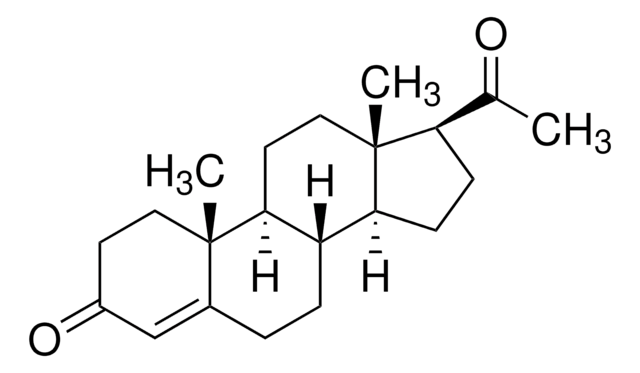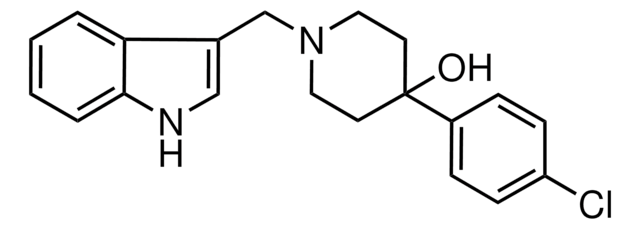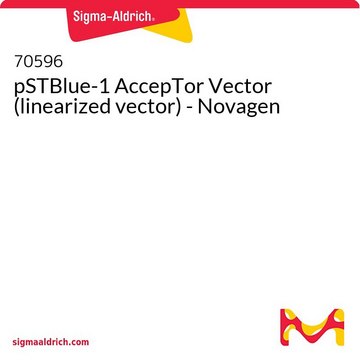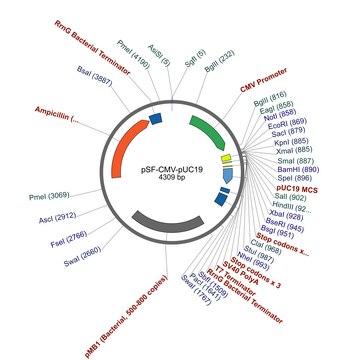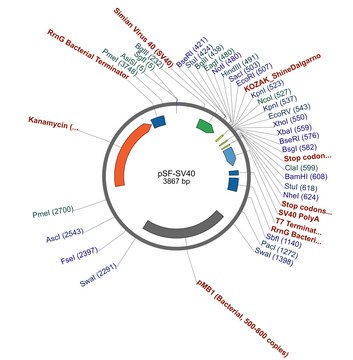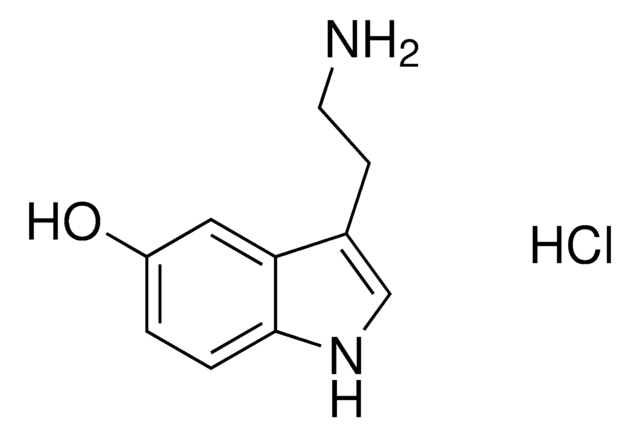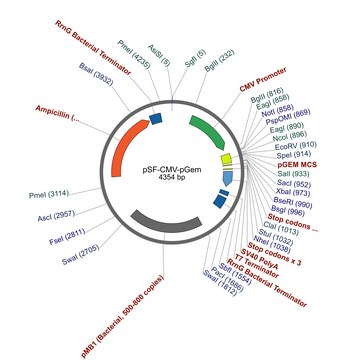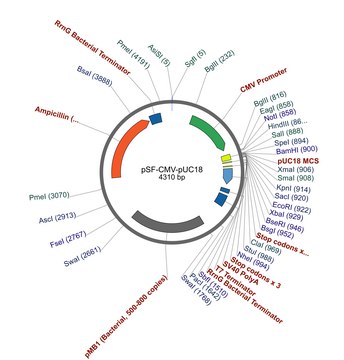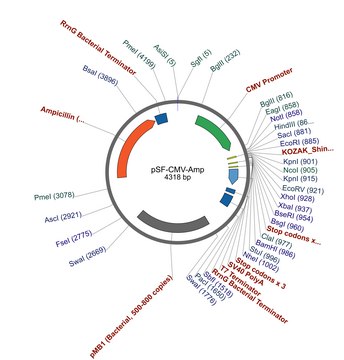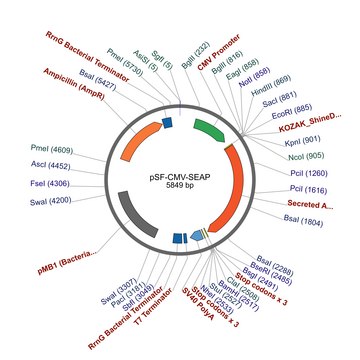OGS109
PSF-CMV-PGEM - CMV PGEM MCS PLASMID
plasmid vector for molecular cloning
Synonym(s):
cloning vector, expression vector, molecular cloning vector, plasmid, plasmid vector, snapfast vector, vector
About This Item
Recommended Products
form
buffered aqueous solution
mol wt
size 4354 bp
bacteria selection
ampicillin
Origin of replication
pUC (500 copies)
Peptide cleavage
no cleavage
Promoter
Promoter name: CMV
Promoter activity: constitutive
Promoter type: mammalian
reporter gene
none
shipped in
ambient
storage temp.
−20°C
1 of 4
This Item | OGS107 | OGS2 | OGS105 |
|---|---|---|---|
| peptide cleavage no cleavage | peptide cleavage no cleavage | peptide cleavage no cleavage | peptide cleavage no cleavage |
| promoter Promoter name: CMV | promoter Promoter name: CMV | promoter Promoter name: CMV | promoter Promoter name: CMV |
| bacteria selection ampicillin | bacteria selection ampicillin | bacteria selection ampicillin | bacteria selection ampicillin |
| mol wt size 4354 bp | mol wt size 4310 bp | mol wt size 4318 bp | mol wt size 5849 bp |
| form buffered aqueous solution | form buffered aqueous solution | form buffered aqueous solution | form buffered aqueous solution |
General description
Promoter Expression Level: This plasmid contains the mammalian CMV promoter to drive gene expression. We have tested all of our mammalian promoters in a range of cell types and CMV is consistently the strongest in those we have studied. However there are many reports of the CMV promoter demonstrating silencing by methylation in long-term culture. For this reason we stock a range of other promoters that are compatible with this plasmid and are available on request.
Application
- The normal NotI SbfI and PstI sites have been ablated in this MCS. The NotI site has been moved to the 5 prime of the MCS this allows the use of many of our 5 prime coding sequences and tags.
- An XbaI site has been added to the end of the MCS.
- The BamHI site that is normally found in all SnapFast vectors (in the downstream fusion MCS) has been replaced with a BclI site. BamHI and BclI produce compatible cohesive ends when cleaved although BclI is methylated in this vector and will require growth in a Dam methylase negative bacterial strain (such as JM110 cells) before it can be used.
The ClaI to NheI sites have other functions such as adding peptide tags or IRES elements. The BsgI and BseRI restriction sites cleave within the stop codon in the XbaI site and allow the retrospective fusion of coding sequences. These sites are normally only used on genes that we sell in the main multiple cloning site. This concept is explained in more detail on our website using the drop down box on the homepage and selecting: Fuse a coding sequence to the 3 prime end of a gene already in the SnapFast plasmid.
Sequence
Analysis Note
related product
Storage Class Code
12 - Non Combustible Liquids
Flash Point(F)
Not applicable
Flash Point(C)
Not applicable
Regulatory Information
Choose from one of the most recent versions:
Certificates of Analysis (COA)
It looks like we've run into a problem, but you can still download Certificates of Analysis from our Documents section.
If you need assistance, please contact Customer Support.
Already Own This Product?
Find documentation for the products that you have recently purchased in the Document Library.
Our team of scientists has experience in all areas of research including Life Science, Material Science, Chemical Synthesis, Chromatography, Analytical and many others.
Contact Technical Service